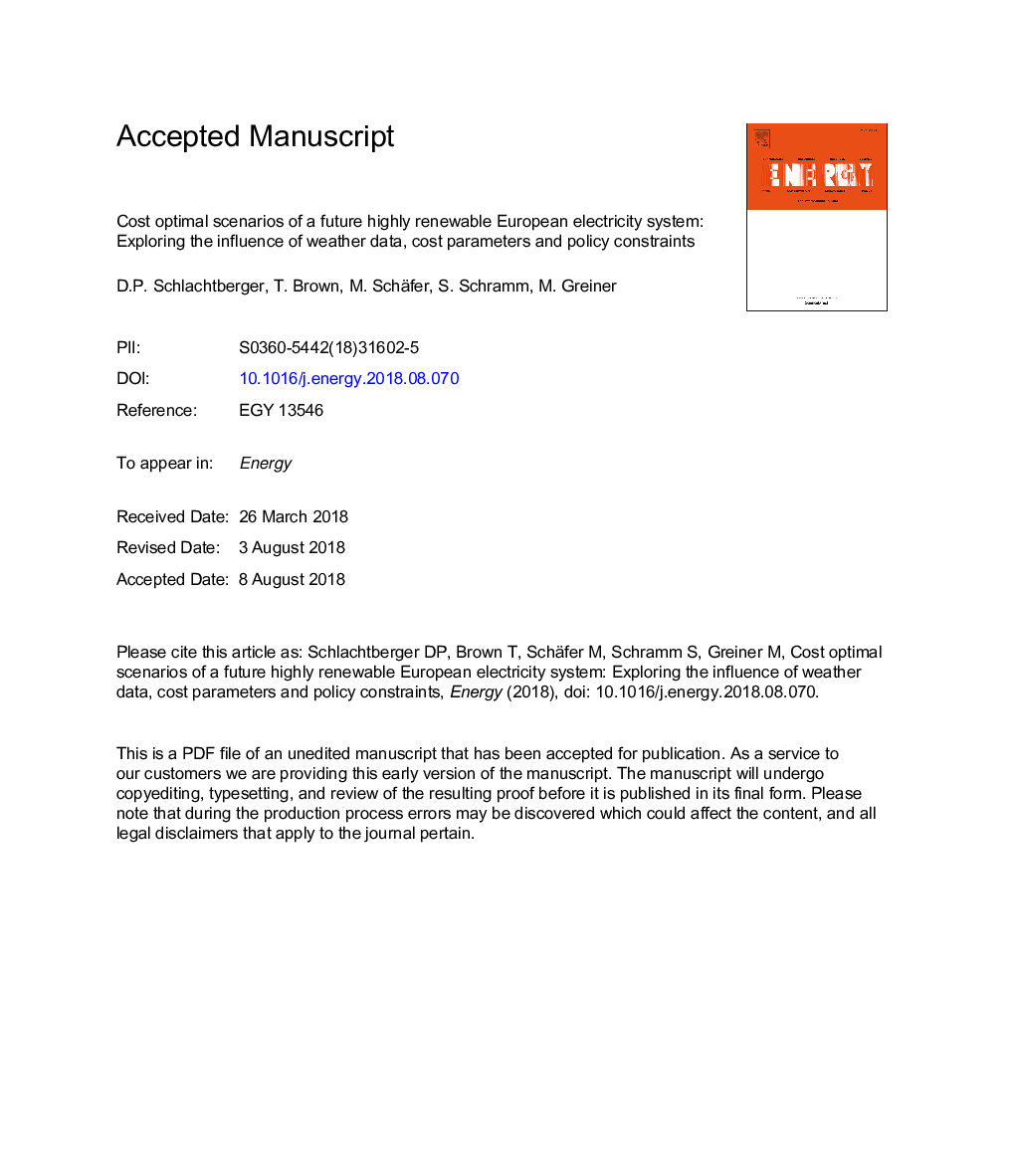| کد مقاله | کد نشریه | سال انتشار | مقاله انگلیسی | نسخه تمام متن |
|---|---|---|---|---|
| 8948723 | 1645682 | 2018 | 19 صفحه PDF | دانلود رایگان |
عنوان انگلیسی مقاله ISI
Cost optimal scenarios of a future highly renewable European electricity system: Exploring the influence of weather data, cost parameters and policy constraints
ترجمه فارسی عنوان
سناریوهای بهینه هزینه یک سیستم انرژی الکتریکی اروپایی که آینده بسیار قابل تجدید است: بررسی تاثیر داده های آب و هوا، پارامترهای هزینه و محدودیت های سیاست
دانلود مقاله + سفارش ترجمه
دانلود مقاله ISI انگلیسی
رایگان برای ایرانیان
کلمات کلیدی
ترجمه چکیده
سناریوهای بهینه هزینه که از مدل های یک سیستم برق بسیار تجدید پذیر حاصل می شود، به اطلاعات ورودی خاص، فرض های هزینه و محدودیت های سیستم بستگی دارد. در اینجا، این تأثیر با استفاده از یک مدل بهینه سازی فنی و اقتصادی برای یک سیستم شبکه 30 کشور اروپایی مورد توجه قرار گرفته است، با توجه به ظرفیت سرمایه گذاری و بهره برداری از باد، خورشیدی، برق آبی، تولید برق، انتقال گاز و گزینه های مختلف ذخیره سازی. استحکام قابل توجهی از کل هزینه های سیستم به داده های آب و هوایی ورودی و تغییرات متوسط در فرض های هزینه مشاهده می شود. جهت مسطح در چشم انداز بهینه سازی در اطراف تنظیمات بهینه هزینه اغلب برنامه ریزان سیستم را می توان انتخاب گزینه های فن آوری های مختلف بدون افزایش قابل توجهی در کل هزینه ها، به عنوان مثال با جایگزینی در خارج از سرزمین با ظرفیت باد قدرت در دریای در صورت پذیرش مسائل عمومی. بررسی طیف وسیعی از مقادیر انتشار دی اکسید کربن نشان می دهد که برای سناریوهایی با گسترش متوسط انتقال، حدود 57 درصد نسبت به سال 1990 کاهش یافته است و در حال حاضر هزینه مطلوب است. برای محدود کردن دی اکسید کربن قوی تر، قدرت تولید شده از توربین های گاز در ابتدا از تولید افزایش می یابد از افزایش ظرفیت های تجدید پذیر. ظرفیت ذخیره سازی غیر هیدروژنی تنها برای سناریوهای کم هیدروژن ساخته می شود تا انعطاف لازم برای رسیدن به حداکثر در بار باقی مانده فراهم شود.
موضوعات مرتبط
مهندسی و علوم پایه
مهندسی انرژی
انرژی (عمومی)
چکیده انگلیسی
Cost optimal scenarios derived from models of a highly renewable electricity system depend on the specific input data, cost assumptions and system constraints. Here this influence is studied using a techno-economic optimisation model for a networked system of 30 European countries, taking into account the capacity investment and operation of wind, solar, hydroelectricity, natural gas power generation, transmission, and different storage options. A considerable robustness of total system costs to the input weather data and to moderate changes in the cost assumptions is observed. Flat directions in the optimisation landscape around cost-optimal configurations often allow system planners to choose between different technology options without a significant increase in total costs, for instance by replacing onshore with offshore wind power capacity in case of public acceptance issues. Exploring a range of carbon dioxide emission limits shows that for scenarios with moderate transmission expansion, a reduction of around 57% compared to 1990 levels is already cost optimal. For stricter carbon dioxide limits, power generated from gas turbines is at first replaced by generation from increasing renewable capacities. Non-hydro storage capacities are only built for low-emission scenarios, in order to provide the necessary flexibility to meet peaks in the residual load.
ناشر
Database: Elsevier - ScienceDirect (ساینس دایرکت)
Journal: Energy - Volume 163, 15 November 2018, Pages 100-114
Journal: Energy - Volume 163, 15 November 2018, Pages 100-114
نویسندگان
D.P. Schlachtberger, T. Brown, M. Schäfer, S. Schramm, M. Greiner,
